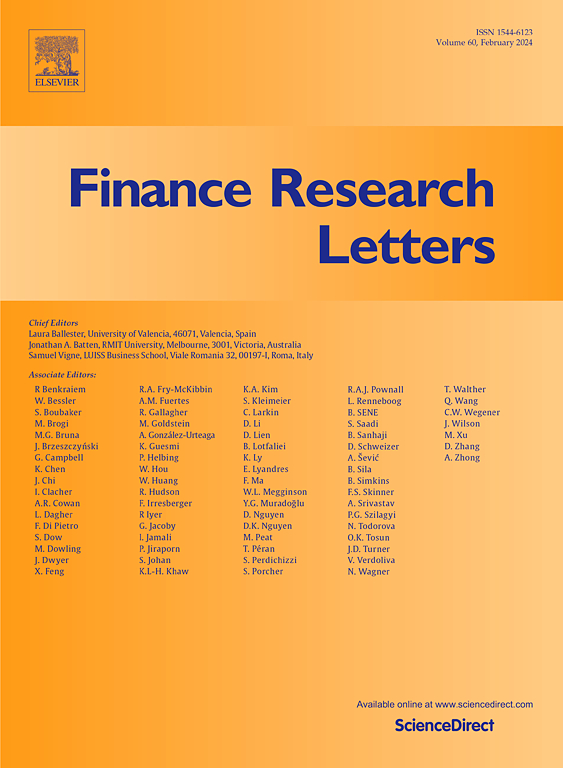财务报表指标对银行信用评级的影响:来自机器学习和SHAP技术的见解
IF 6.9
2区 经济学
Q1 BUSINESS, FINANCE
引用次数: 0
摘要
本研究探讨财务报表指标对银行信用评级的影响。我们构建了一个包含53家银行和28个关键财务指标的数据集,并使用两个机器学习模型,GBR和LightGBM,来预测基于这些指标的信用评级。为了了解各指标的贡献,我们采用SHapley加性解释(SHAP)来解释预测结果。分析显示,与银行收入结构有关的指标,特别是净利息收入,对信贷评估有重大影响。这一发现强调了银行偿债能力和收入流多样化的关键作用。本文章由计算机程序翻译,如有差异,请以英文原文为准。
The impact of financial statement indicators on bank credit ratings: Insights from machine learning and SHAP techniques
This study investigates the influence of financial statement indicators on bank credit ratings. We construct a dataset encompassing 53 banks and 28 key financial indicators and employ two machine learning models, GBR and LightGBM, to predict credit ratings based on these indicators. To understand the contributions of the individual indicators, we apply SHapley Additive exPlanations (SHAP) to interpret the forecasting results. The analysis reveals that indicators pertaining to a bank’s revenue structure, particularly net interest income, have a significant impact on credit assessments. This finding underscores the critical role of a bank’s debt repayment capacity and income stream diversification.
求助全文
通过发布文献求助,成功后即可免费获取论文全文。
去求助
来源期刊

Finance Research Letters
BUSINESS, FINANCE-
CiteScore
11.10
自引率
14.40%
发文量
863
期刊介绍:
Finance Research Letters welcomes submissions across all areas of finance, aiming for rapid publication of significant new findings. The journal particularly encourages papers that provide insight into the replicability of established results, examine the cross-national applicability of previous findings, challenge existing methodologies, or demonstrate methodological contingencies.
Papers are invited in the following areas:
Actuarial studies
Alternative investments
Asset Pricing
Bankruptcy and liquidation
Banks and other Depository Institutions
Behavioral and experimental finance
Bibliometric and Scientometric studies of finance
Capital budgeting and corporate investment
Capital markets and accounting
Capital structure and payout policy
Commodities
Contagion, crises and interdependence
Corporate governance
Credit and fixed income markets and instruments
Derivatives
Emerging markets
Energy Finance and Energy Markets
Financial Econometrics
Financial History
Financial intermediation and money markets
Financial markets and marketplaces
Financial Mathematics and Econophysics
Financial Regulation and Law
Forecasting
Frontier market studies
International Finance
Market efficiency, event studies
Mergers, acquisitions and the market for corporate control
Micro Finance Institutions
Microstructure
Non-bank Financial Institutions
Personal Finance
Portfolio choice and investing
Real estate finance and investing
Risk
SME, Family and Entrepreneurial Finance
 求助内容:
求助内容: 应助结果提醒方式:
应助结果提醒方式:


